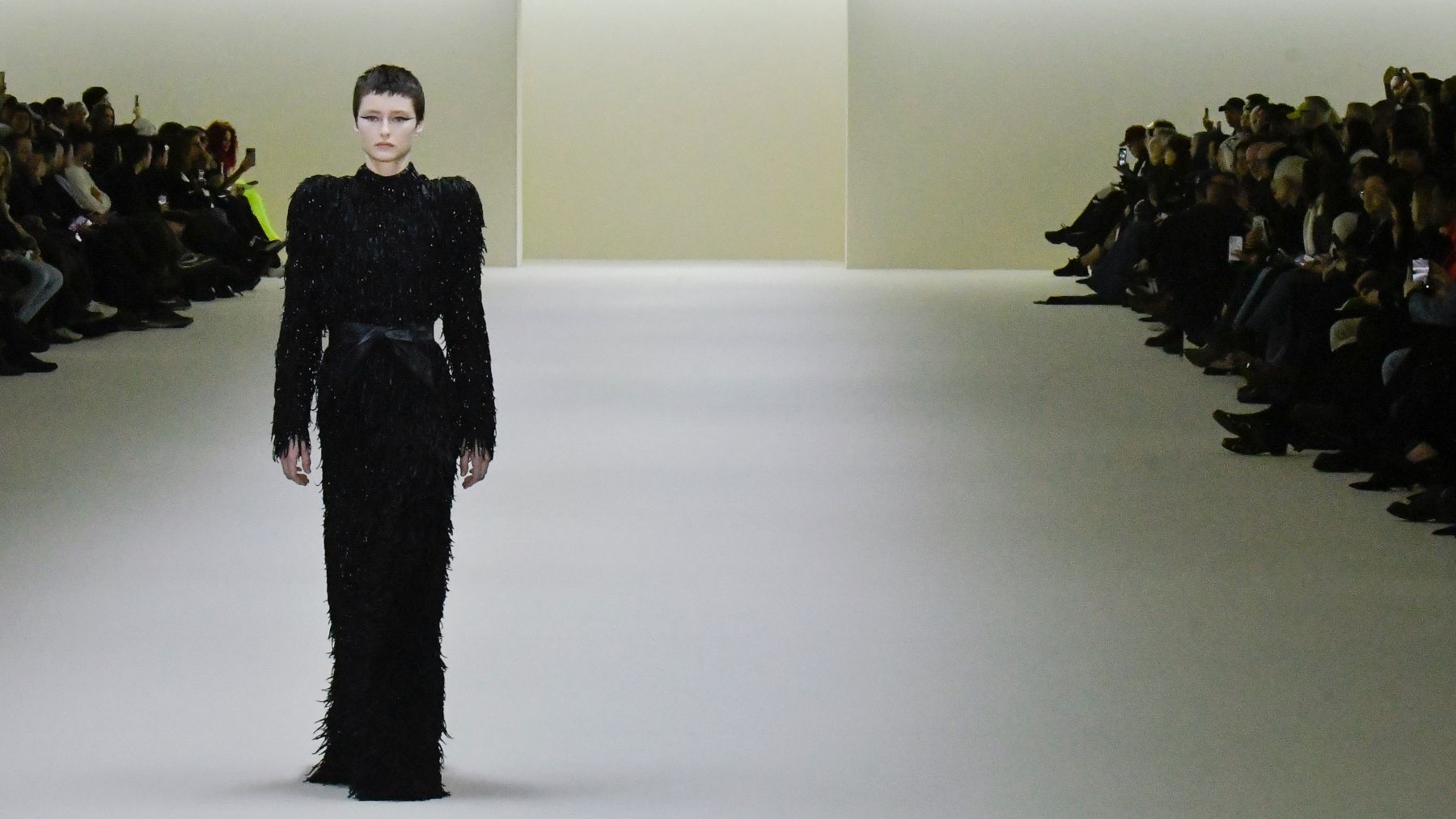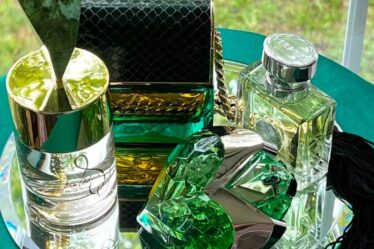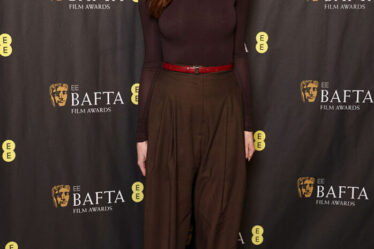
PARIS — I’ve heard the word “restart” enough times this season for it to define fashion’s state of mind at the moment. But for Demna at Balenciaga, “restart” also comes with an added psychological weight. Call it reputational rehab. He’s not only clawing his own way back from the damage done by the outrage that erupted in December around two of Balenciaga’s advertising campaigns. “Worse for me was Cristobal’s name being dragged through the mud,” he said when we talked on Friday. “It’s my job, my obligation now, to redeem it.” He felt the best thing he could do is do what he did best: make clothes.
Making clothes was, in fact, Demna’s occupational therapy while the scandal boiled in December. He took a rail of trousers home from work – Balenciaga prototypes, vintage pieces – and started deconstructing and reconstructing them with his Singer sewing machine, turning pants into jackets or coats. “I realised this is what I’m supposed to be doing, I reconnected to myself, sitting like this grandma in my apartment stitching weird pants into sleeves.” Why pants? Demna’s mother reminded him that the item of clothing that set him on his road to fashion was the pair of pants he had made for him by a local tailor when he was six years old. So it just felt right. And this therapeutic upcycling was the genesis of the first passage of his new collection: every coat jacket and skirt hemmed with the waistband of a pair of trousers, and every so often a doubled pair of pants, a detail which put me in mind of those far-off days when people laughed at the avant-garderie of Comme des Garçons for adding decorative but useless sleeves to jackets.
But that kind of provocation seems to spell fashion for Demna. He’d never done a sack dress before, even though it was a key piece for his revered Cristobal – “Too retro, too mumsy,” he said – but here it was, stitched together from upended pants and suddenly cool-ish. He cut a trenchcoat from a mass of chinos, and exploded silhouettes with the inflatable device that usually protects motocross and equestrian competitors. The resulting hunchback effect was emblematic of Demna’s commitment to challenging fashion’s ingrained status quos, in the same way that he exaggerated the shape of a dress by draping it over a massive handbag. There’s a Why? in there somewhere, which is easily answered with a Why Not?, again the vein of a Comme des Garçons challenge.
Still, it felt like Demna had covered this territory before. Significantly, there were no slogan t-shirts or sneakers, which have been foundational to Balenciaga’s explosive growth under Demna’s tenure. The focus was on sobriety and structure, overlooking the passage of second-skin male athletic wear, whose raison d’être seemed to be the promotion of a line of “new biker boots” (or footwear for Orcs.) The sleeves of his signature floral dresses may have been longer than ever. (Sidebar: I had no idea that Demna’s appetite for long sleeves stemmed from his self-consciousness as a hirsute Georgian teen when he first encountered the gay scene in Germany and Belgium – he wanted to hide his hairy hands). But they still had the peculiar bourgeois resonance of the very first time he showed them for Balenciaga. Likewise the chunky fur coats. But a closing sequence of evening gowns spotlit a different side of Demna. With their emphatically rounded shoulders – a legacy of Cristobal’s – and their different ways to shine (particularly the oily black gloss of one dress that looked like it was composed of crow feathers), they pointed to everything he was desperate to escape from in his ready-to-wear collections for the brand.
The staging amplified that. For the past few years, spectacle has overwhelmed Demna’s collections. It came to a head for him in October after the “mud” collection. “I felt like shit, like I’m almost betraying myself by doing shows like that and not giving any space to the actual work that we spent six months doing. And I thought, ‘Okay, this has to change’.” The scandal accentuated the change. The set was the most minimal yet: A white box swathed in the white toile that fashion ateliers cut samples from. “That’s the beginning of every garment,” Demna explained. “Something that symbolises reset. I don’t want to say a new chapter because I will still design the way I design, which will evolve. But it’s also because of the way I feel now and, even though that’s painful and horrible, somehow it grows, and you learn and you become maybe a better version of yourself.”



